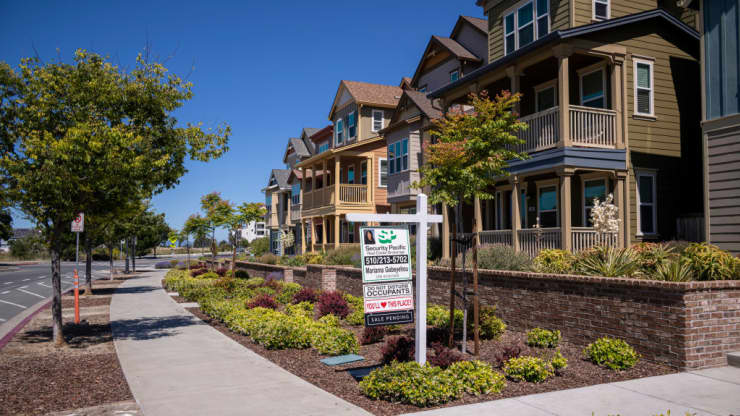- The housing market has cooled off a bit after an incredibly hot stretch fueled by the pandemic. That doesn’t mean it’s about to be 2007 all over again.
- America’s housing market is in far better health today. That’s thanks, in part, to new lending regulations that resulted from that meltdown.
- There aren’t as many risky loans or mortgage delinquencies, although high home prices are forcing many people out of the market.
As quickly as mortgage rates are rising, the once red-hot housing market is cooling off. Home prices are still historically high, but there is concern now that they will ease up as well.
All of this has people asking: Is today’s housing market in the same predicament that it was over a decade ago, when the 2007-08 crash caused the Great Recession?
The short answer is: no. America’s housing market is in far better health today. That’s thanks, in part, to new lending regulations that resulted from that meltdown. Those rules put today’s borrowers on far firmer footing.
For the 53.5 million first lien home mortgages in America today, the average borrower FICO credit score is a record high 751. It was 699 in 2010, two years after the financial sector’s meltdown. Lenders have been much more strict about lending, much of that reflected in credit quality.
Home prices have soared, as well, due to pandemic-fueled demand over the past two years. That gives today’s homeowners record amounts of home equity. So-called tappable equity, which is the amount of cash a borrower can take out of their home while still leaving 20% equity on paper, hit a record high of $11 trillion collectively this year, according to Black Knight, a mortgage technology and data provider. That’s a 34% increase from a year ago.
At the same time, leverage, which is how much debt the homeowner has against the home’s value, has fallen dramatically.
Total mortgage debt in the United States is now less than 43% of current home values, the lowest on record. Negative equity, which is when a borrower owes more on the loan than the home is worth, is virtually nonexistent. Compare that to the more than 1 in 4 borrowers who were under water in 2011. Just 2.5% of borrowers have less than 10% equity in their homes. All of this provides a huge cushion should home prices actually fall.
Not as many risky loans
There are currently 2.5 million adjustable-rate mortgages, or ARMs, outstanding today, or about 8% of active mortgages. That is the lowest volume on record. ARMs can be fixed, usually for terms of five, seven or 10 years.
In 2007, just before the housing market crash, there were 13.1 million ARMs, representing 36% of all mortgages. Back then, the underwriting on those types of loans was sketchy, to say the least, but new regulations following the housing crash changed the rules.
ARMs today are not only underwritten to their fully indexed interest rate, but more than 80% of today’s ARM originations also operate under a fixed rate for the first seven to 10 years.
Read more: U.S. News

What is to “comment” on. The above is all that opened.